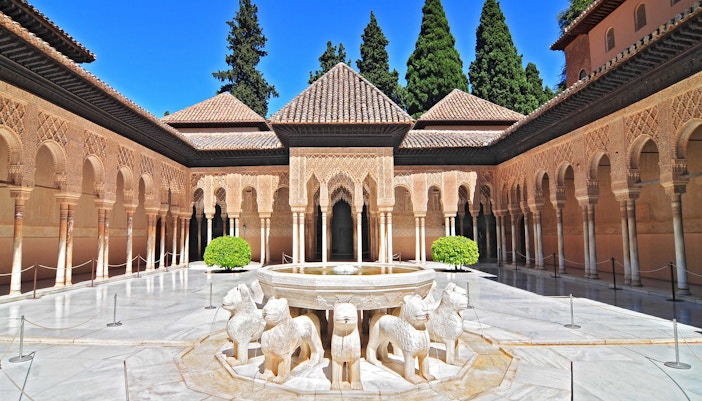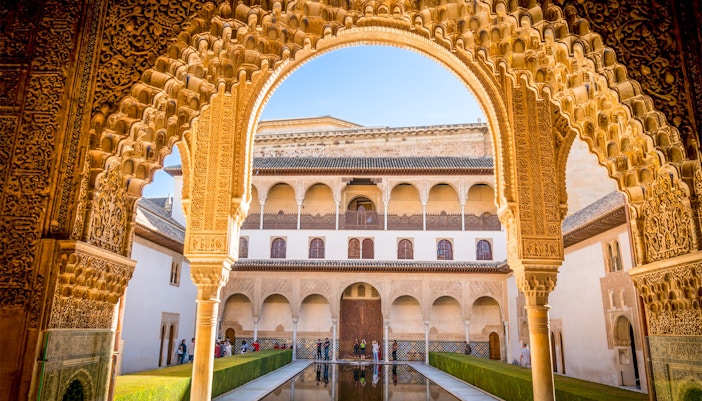The building features a striking door that has functioned as the primary access to the Alhambra since the 14th century from the San Pedro forest. Puerta de las Armas is one of the main buildings of the Alcazaba and takes up the entire lower level. Situated on the outer perimeter wall of the Alcazaba, this gate facilitated the passage of troops, supplies, and visitors between the city and the interior of the Alhambra complex.
Highlights of the Alcazaba
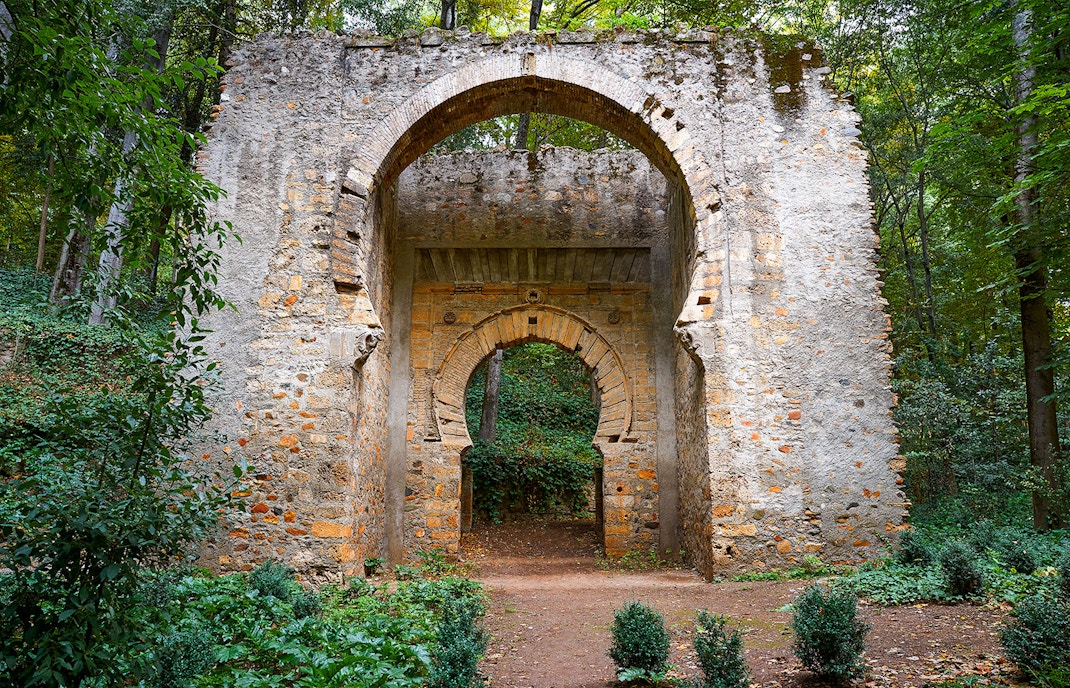
Puerta de las Armas
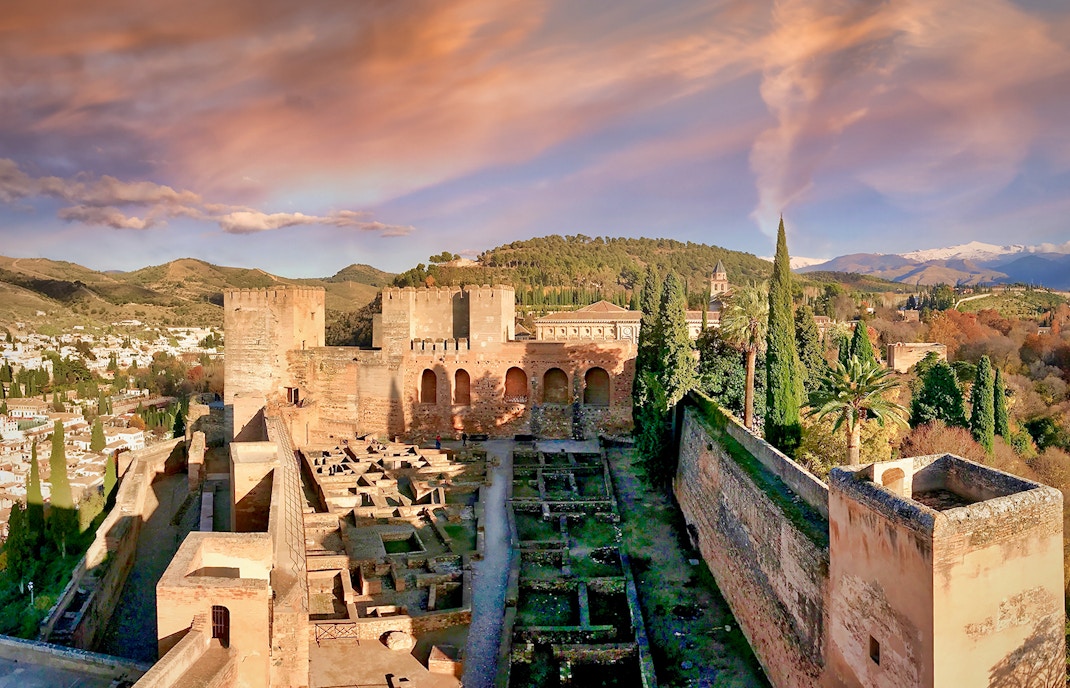
Torre del Homenaje
Standing as the tallest tower, the Torre del Homenaje served as the keep and military command post. Its terrace provided commanding views, allowing for visual signals to be sent across the area. The tower's five floors housed various chambers, including the residence of the commander of the Alhambra's guards.
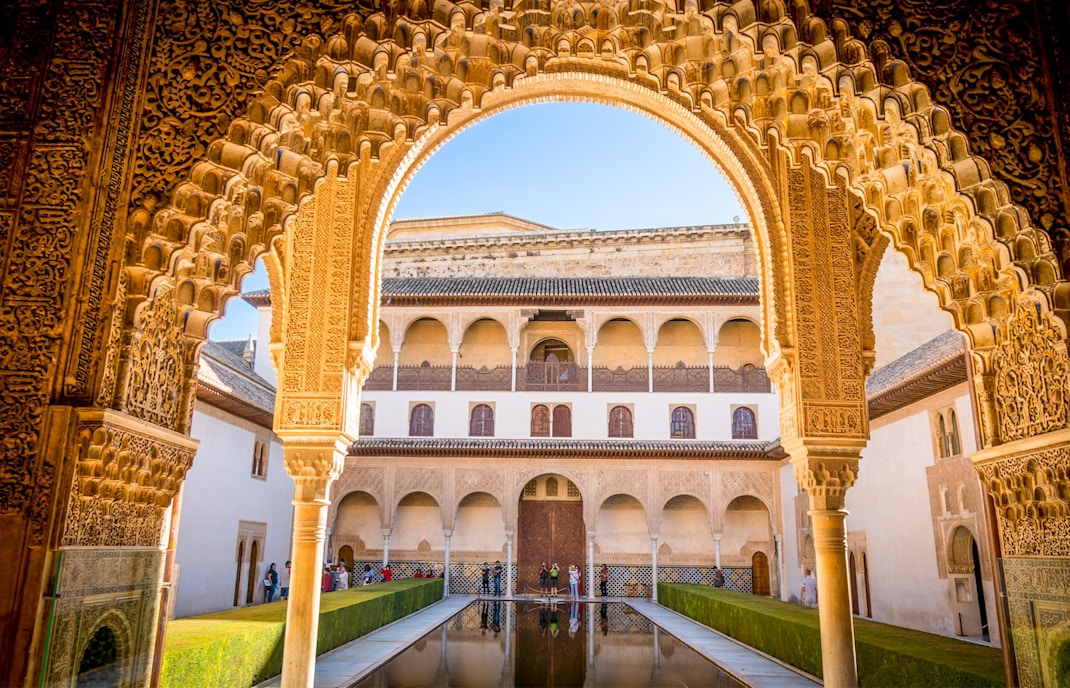
Torre de la Vela
One of the most recognizable features of the Alcazaba, Torre de la Vela is famous for its flags and bell tower. During the time of the Catholic Monarchs, the tower used to function as the living quarters of the bell ringers. Now, the bell is used by farmers to mark any changes in irrigation cycles. The bell tower has also been replaced and repositioned multiple times. Presently, 4 flags are hosted on the tower: the Andalusian flag, the Grenadian flag, the European flag, and the Spanish flag.

Plaza de las Armas
Adjacent to the Puerta de las Armas lies the Plaza de las Armas, or Arms Square, a spacious area within the Alcazaba where military activities and gatherings took place. Serving as a focal point for training exercises, military drills, and ceremonial events, the plaza echoed with the sounds of soldiers honing their skills and commanders strategizing for defense.
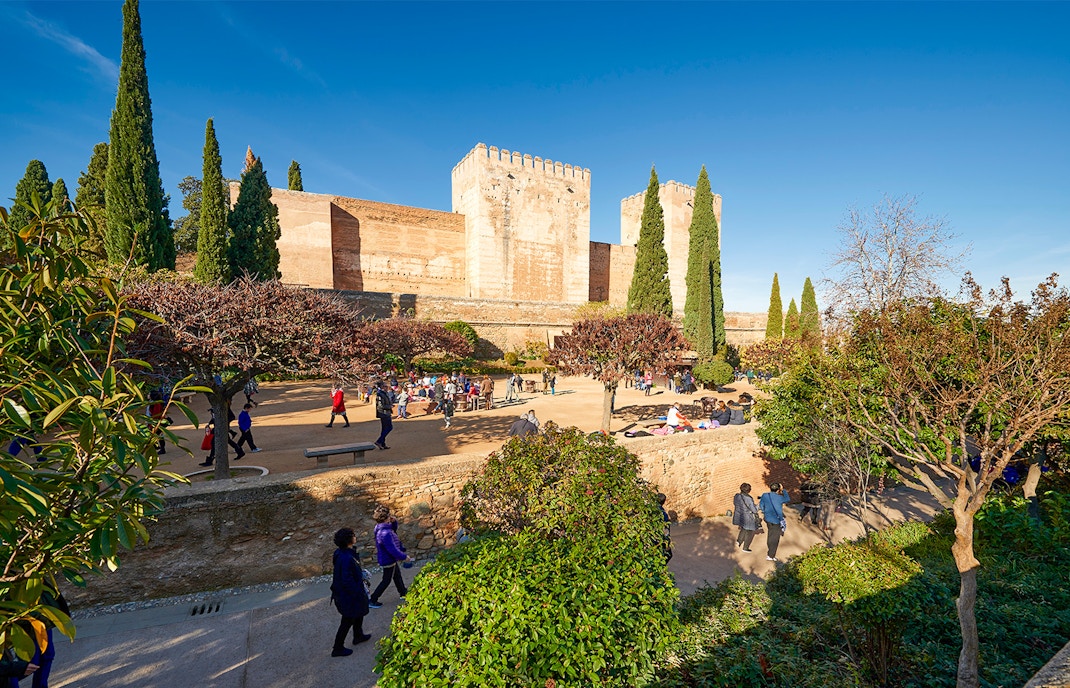
Plaza de Los Aljibes
The Plaza de Los Aljibes lies in the trench between the Alcazaba and the palaces. The name is derived from the cisterns that were constructed in the square at the end of the 15th century. Throughout its storied past, the Plaza de Los Aljibes has served as a cultural hub where ideas, traditions, and artistic expressions converge. Musicians, poets, and scholars once gathered here and it is a place of great cultural importance.

Jardín de los Adarves
Originally a defensive rampart, it evolved into a tranquil recreational garden during the 16th century as part of fortress improvements against modern artillery. Once serving as a strategic stronghold, the space now features plants and two exquisite fountains, The first fountain, dating back to around 1628, boasts intricate carvings of genies riding dolphins, while the second, added in 1624, showcases arabesque motifs, reminiscent of the Nasrid-built Court of the Lions.
